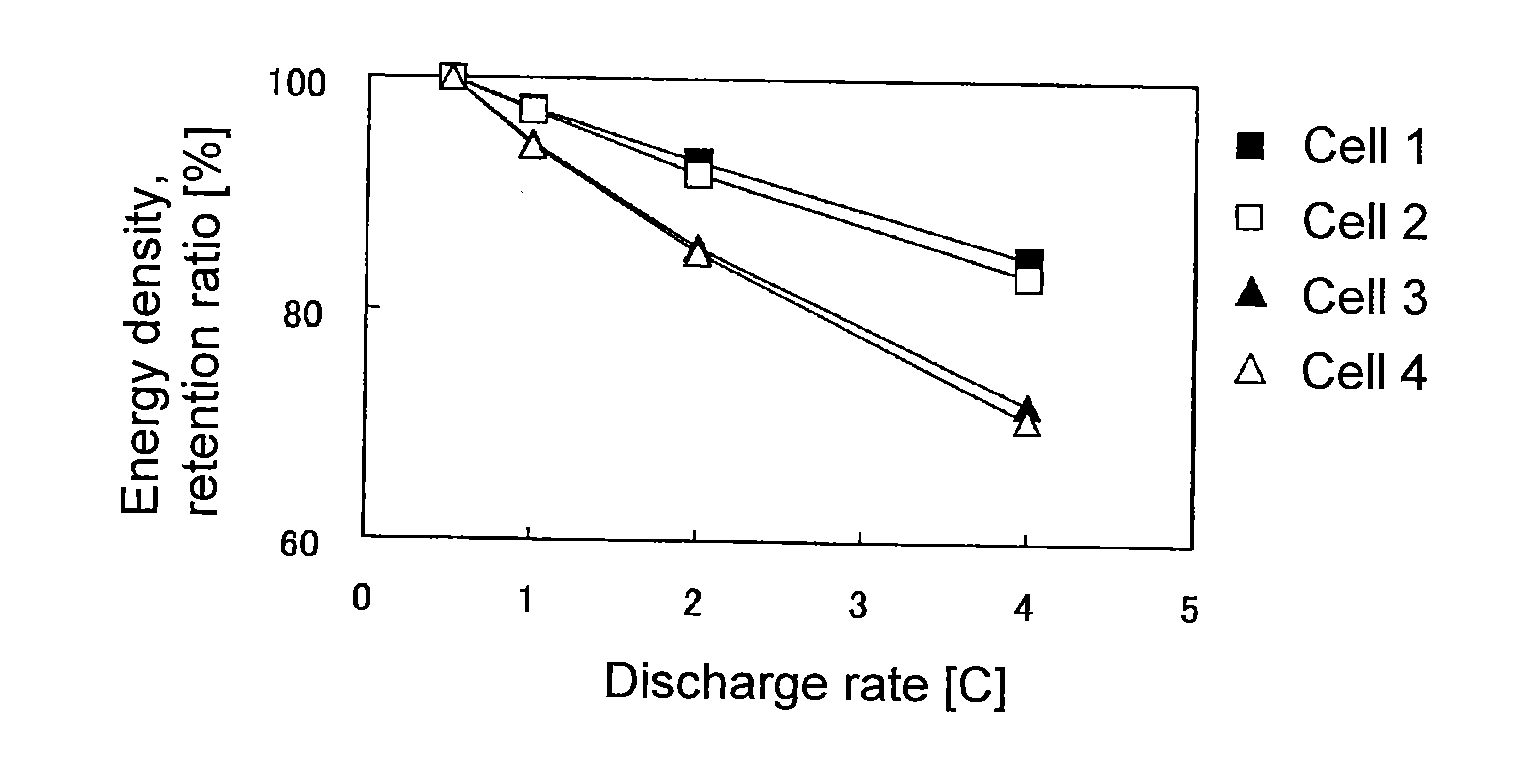Non-aqueous electrolyte solution for secondary batteries, and secondary battery
a technology of secondary batteries and electrolyte solutions, which is applied in the direction of non-aqueous electrolyte cells, cell components, electrochemical generators, etc., can solve the problems of low ability of fluorinated solvents to dissolve electrolyte salts, low conductivity, and deterioration of rate characteristics, and achieve excellent cycle properties and high rate charge/discharge properties.
- Summary
- Abstract
- Description
- Claims
- Application Information
AI Technical Summary
Benefits of technology
Problems solved by technology
Method used
Image
Examples
example 1
[0183]LiPF6 (1.52 g) as a lithium salt (I), was dispersed in HFE5510 (CHF2CF2CH2OCF2CFHCF3, 6.93 mL) as a compound (II-1), and then, monoglyme (1.80 g) as a compound (II-2) and ethylene carbonate (1.32 g) as a compound (II-3) were added and mixed to obtain a non-aqueous electrolyte solution.
examples 2 to 11
[0184]A non-aqueous electrolyte solution was obtained in the same manner as in Example 1 except that the composition of the lithium salt (I) and compounds (II-1) to (II-3) was changed as shown in Table 1.
[0185]Further, the compounds disclosed in Table 1 are as follows.
[0186]HFE5510: CHF2CF2CH2OCF2CFHCF3
[0187]AE-3000: CF3CH2OCF2CF2H
[0188]HFE449mec-f: CF3CH2OCF2CHFCF3
[0189]SX-1: 2,2-bis(trifluoromethyl)-1,3-dioxolane
[0190]monoglyme: CH3OCH2CH2OCH3
[0191]diglyme: CH3O(CH2CH2O)2CH3
[Evaluation Methods]
(Solubility Test)
[0192]In each Example, the state of dissolution of the non-aqueous electrolyte solution after expiration of 1 hour from the preparation of the non-aqueous electrolyte solution, was visually evaluated. In the evaluation of the solubility, a state such that the electrolyte solution was uniform was identified by “◯ (good)”, and a state such that the electrolyte solution underwent phase separation into two phases was identified by “x (no good)”.
(Flammability Test)
[0193]10 mL...
example 29
Evaluation of Sheet-Form Non-Aqueous Electrolyte Solution Secondary Battery with Single-Pole Cell Comprising LiCoO2 Positive Electrode-Lithium Metal Foil
[0197]90 Parts by mass of LiCoO2 (tradename: “Selion C”, manufactured by AGC Seimi Chemical Co., Ltd.), 5 parts by mass of carbon black (tradename: “DENKABLACK”, manufactured by Denki Kagaku Kogyo Kabushiki Kaisha) and 5 parts by mass of polyvinylidene fluoride were mixed, and N-methyl-2-pyrrolidone was added to obtain a slurry. The slurry was applied uniformly on each side of a 20-μm-thick aluminum foil, followed by drying and then by pressing so that the density of the positive electrode active material layer would be 3.0 g / cm3, thereby to obtain a LiCoO2 positive electrode.
[0198]The LiCoO2 positive electrode, a lithium metal foil having the same area as the LiCoO2 positive electrode, and a separator made of polyethylene, were laminated in a 2016 type coin cell in the order of the lithium metal foil, the separator and the LiCoO2 p...
PUM
| Property | Measurement | Unit |
|---|---|---|
| voltage | aaaaa | aaaaa |
| mass % | aaaaa | aaaaa |
| mass % | aaaaa | aaaaa |
Abstract
Description
Claims
Application Information
 Login to View More
Login to View More - R&D
- Intellectual Property
- Life Sciences
- Materials
- Tech Scout
- Unparalleled Data Quality
- Higher Quality Content
- 60% Fewer Hallucinations
Browse by: Latest US Patents, China's latest patents, Technical Efficacy Thesaurus, Application Domain, Technology Topic, Popular Technical Reports.
© 2025 PatSnap. All rights reserved.Legal|Privacy policy|Modern Slavery Act Transparency Statement|Sitemap|About US| Contact US: help@patsnap.com



